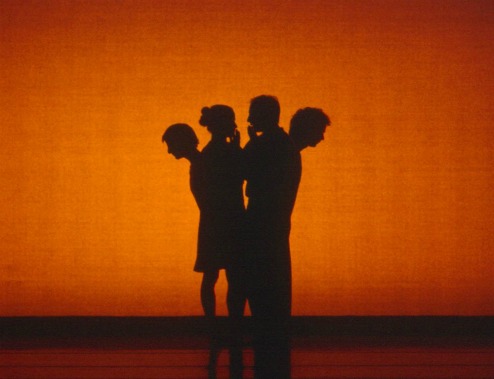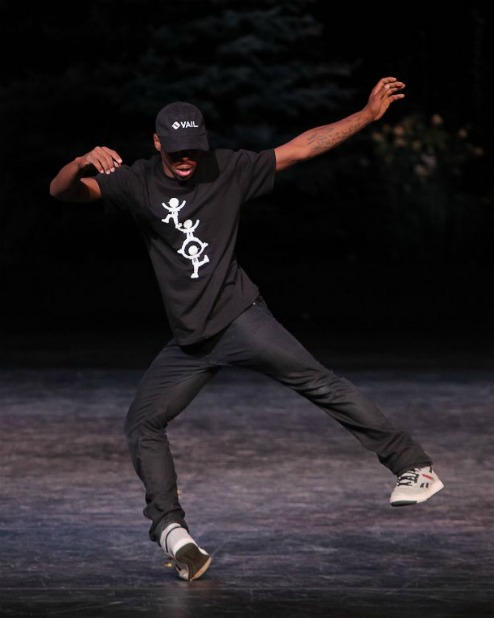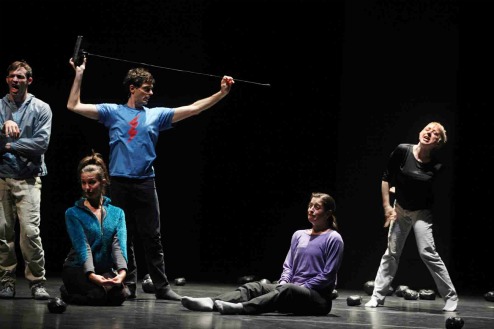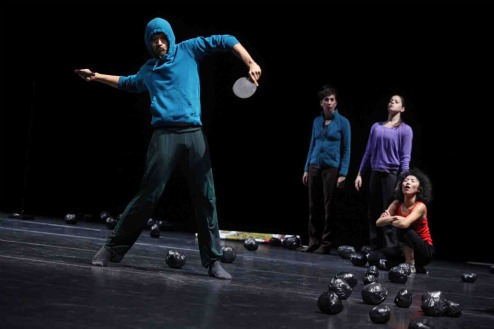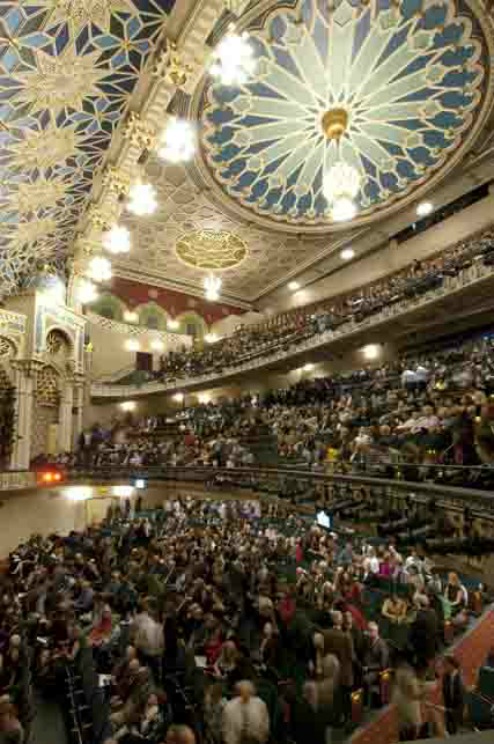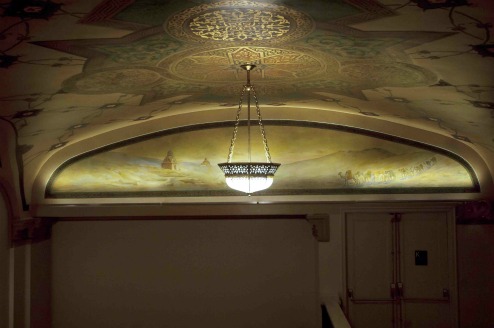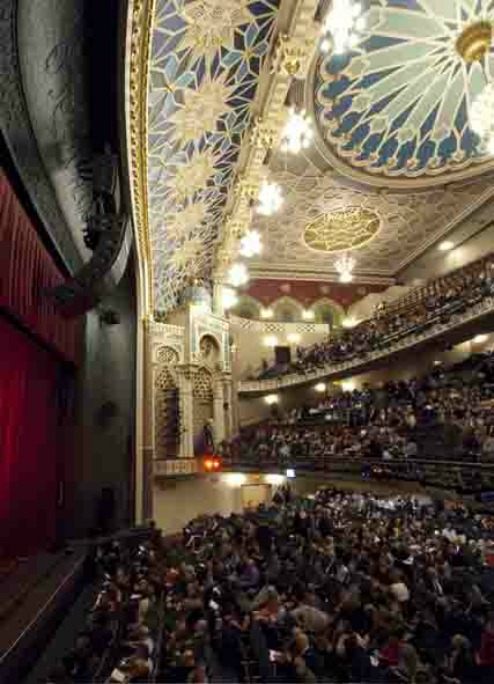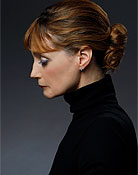Morphoses / Joyce Theater, NYC / October 25-30, 2011
Remember Morphoses, the ambitious start-up company Christopher Wheeldon cavalierly abandoned after just three years in 2010, leaving the troupe’s co-founder, Lourdes Lopez, to pick up the pieces? Last night, at the Joyce, it concluded the six-day run of its rebirth. If Bacchae, an hour-long piece by the Italian choreographer Luca Veggetti that constituted its sole offering, is any indication, we may have witnessed a second round of death throes.
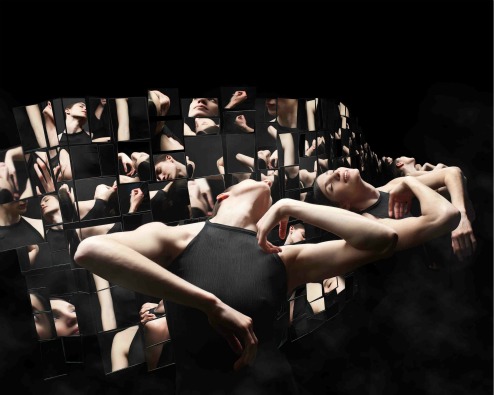
Scattershot: Frances Chiaverini in Bacchae, created by Luca Veggetti for Morphoses
Photo: Kyle Froman
As its title indicates, Veggetti’s Bacchae claims to be based on the violent and profound Greek drama of the same name that was among the last works of Euripides, the towering fifth-century BCE playwright. (My colleague Deborah Jowitt offers a splendid survey of this background in her Dance Beat review for ArtsJournal.) If, however, you went to see Morphoses hoping to encounter in Veggetti’s version the ancient classic’s basic story–with its philosophical ramifications and theatrical punch–you were on a fool’s errand.
Though he deigns to summarize Euripides’ plot in a brusque just-the-facts-ma’am paragraph in the house program, Veggetti refuses to stoop so low as to represent any of the events in the play or identify any of the characters on the stage. Instead he offers highfalutin’ pretentiousness in the form of sleek movement in a reduced vocabulary and posturing made to look runway-stylish.
The key ingredients in the choreography are bold gestures of the arms, strangely curved in at the wrist; borrowings from an advanced level of yoga (a practice surely Greek to the Greeks); and, worse of all, endlessly reiterated skids across the floor, as if the dancers were on kids’ scooters, an effect made possible by their feet being sheathed in socks. The move has no decipherable context to give it meaning; the socks look absurd.
Throughout, apparently to create atmosphere–of dread? of great doings?–voices from nowhere intone words and phrases that, when they’re not too blurry, still don’t tell us much. There are also tactics , seemingly heavy with metaphor, that fail to give us the key to their lock. For instance, we first meet the flautist Erin Lesser, in a long stint of trying to animate an instrument taller that she is. Much time and breath are wasted on this absurdist passage, which includes assuming the overgrown flute is a percussion instrument. When Lesser appears later, she gets to play a real flute. What’s the point of this?
Bacchae is also crammed with smart-alecky tricks that fizzle and arch devices that are simply ludicrous. A little wooden puppet–a strung-up version of those small jointed wooden figures that help visual artists get anatomy-in-action right–appears early in the piece and never returns to clarify its purpose. Veggetti might usefully have a look at Crystal Pite’s Dark Matter to see how richly such an avatar can be used. And then there was the much-repeated effect of having the dancers enter the stage by crawling–awkwardly, too–underneath the yards of black fabric that curtained the three walls of the stage. I could go on; the list is substantial.
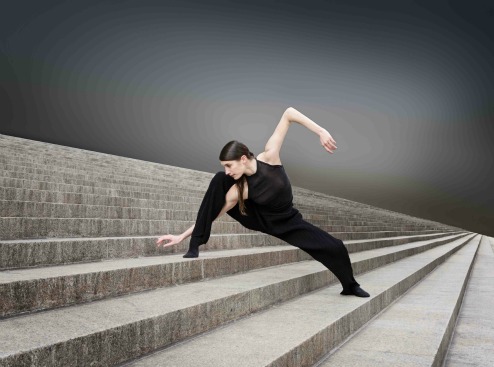
Footsteps: Chiaverini in Veggetti’s Bacchae for Morphoses
Photo: Kyle Froman
In both its incarnations Morphoses has been, of necessity, a pick-up troupe. Its 11 current dancers form a modern ballet group deserving nothing but praise; to a one they’re handsome, proficient, mature, and distinctly individual. Three dancers play the central roles in Bacchae. Frances Chiaverini has an extended solo that functions as a prologue, her long, strong, impressively flexible body stretching on the floor as if she were simply a dancer warming up. In the course of the show she’s regularly the central–magisterial–figure of a segment, even when she’s hovering on the dusky sidelines, watching it.
Gabrielle Lamb of the gleaming copper hair is paler and smaller. Although she’s clearly strong, especially in held poses, she has a fragile, vulnerable air. She appears to be condemned by fate, projecting courage through passive endurance. Adrian Danchig-Waring (borrowed from the New York City Ballet) has the face and bearing of a long-ago Mediterranean potentate. You could imagine his head on an old Roman coin. Full-figure he appears at once entirely self-possessed yet gnawed by inner turmoil. Imagine how eloquent such dancers could be in worthy choreography!
Lopez’s long-range plan envisions the troupe’s appointing a different “resident artistic director” every year. This person (the Swedish choreographer Pontus Lidberg’s name has been mentioned for 2012) will create or be the catalyst for a forward-looking work, alert to the possibilities of multi-media, which are already embraced in the dance world. The question remains, Will there be a next year?
© 2011 Tobi Tobias




